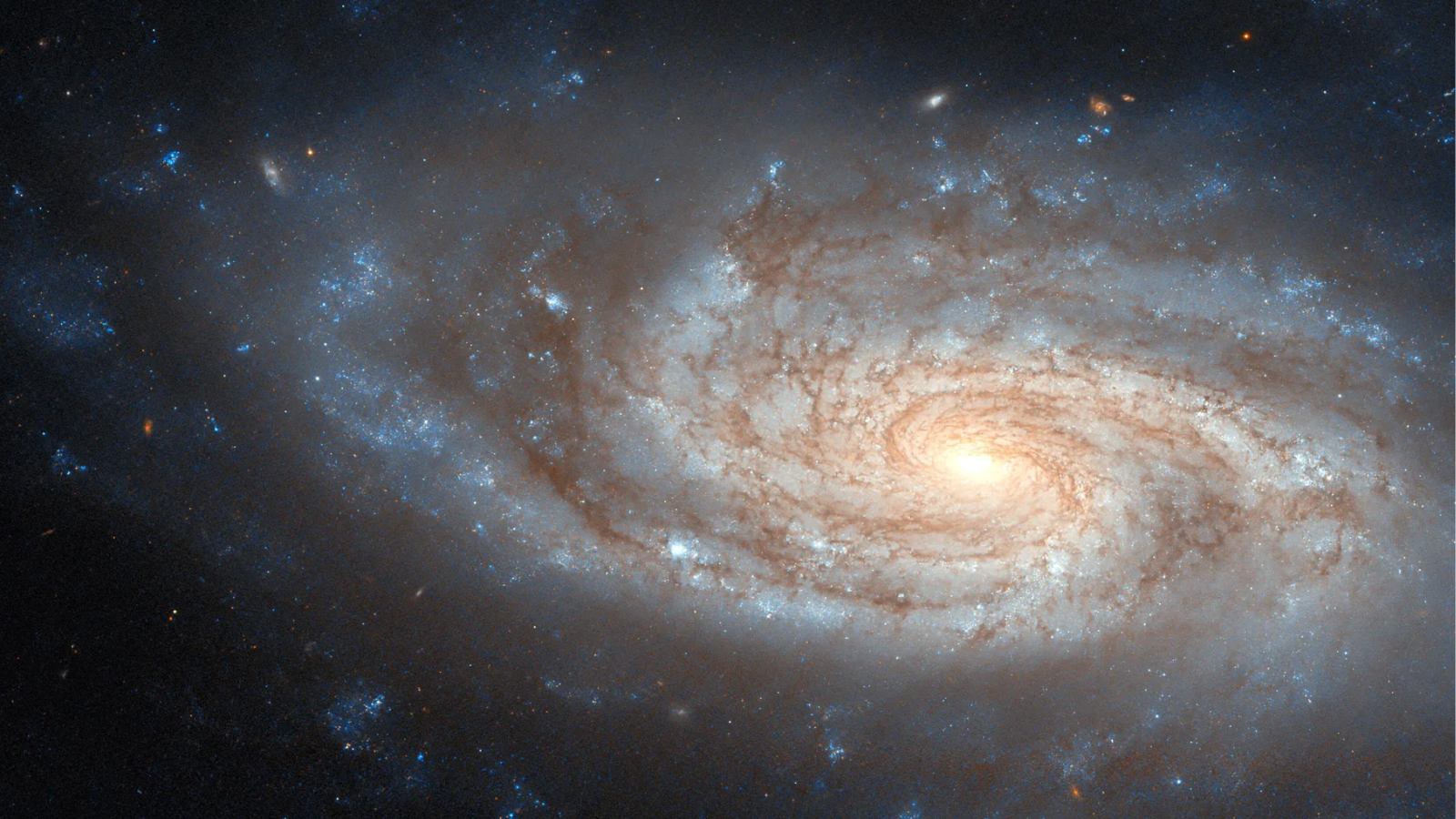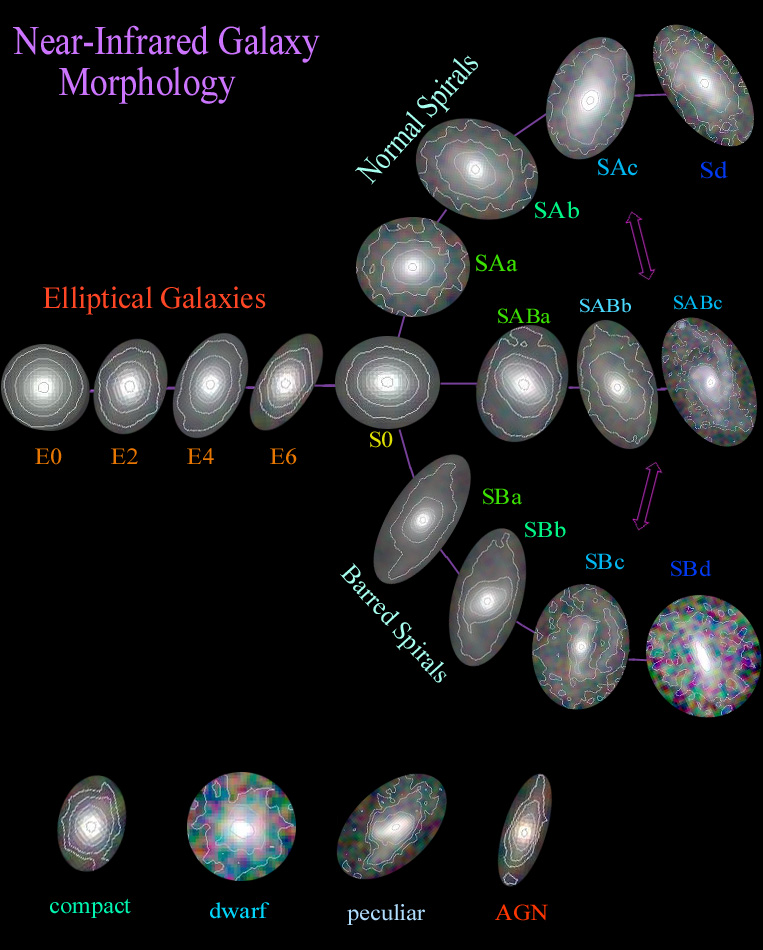
Hubble has just dropped more galactic eye candy!
From its vantage point in low-Earth orbit, the Hubble Space Telescope recently captured an intricate portrait of the NGC 3430 galaxy, a classic spiral galaxy that resides 100 million light-years from Earth in the constellation Leo Minor.
The galaxy itself is a stunning swirl of gas and dust sculpted into thick lanes that spiral around its center. Bright blue splotches sprinkled among these arms show regions where new stars are forming. The orange specks seen at the top and bottom of the image show distant background galaxies behind NGC 3430.
Just outside the galaxy's main structure are several other neighboring galaxies beyond the frame of this image. One of them, in fact, is close enough that its gravitational influence has sparked some of the star formation within NGC 3430, a recent NASA statement said.
Related: Hubble Space Telescope finds closest massive black hole to Earth — a cosmic clue frozen in time
Both NGC 3430 and the Milky Way are spiral galaxies, but our home galaxy has something that sets it apart. The Milky Way is a barred spiral galaxy, a classification that refers to the dense, oval-shaped structure of old stars cutting across the heart of our galaxy.
NGC 3430, on the other hand, has morphed into a "classic" or "normal" spiral galaxy, lacking a dense central bar of ancient stars but still possessing clear and distinctive spiral arms.
Classic spiral, barred spiral, and other types of galaxy shapes, lenticular, elliptical, and irregular, date back to the early 1900s when the study of galaxies was still in its infancy.
NGC 3430's distinct shape may even have inspired astronomer Edwin Hubble to use it to define his classification of galaxies. In a 1916 paper, the astronomer grouped around 400 galaxies by their appearance: spiral, barred spiral, lenticular, elliptical, or irregular—a straightforward topology that formed the basis for modern schemes used today.
Another study in the late 1990s found that NGC 3430 shows clear signs of tidal interactions with a neighboring galaxy, NGC 3424.

Like other images sent home by Hubble, it is perhaps hard to imagine that such intricate views of the cosmos are taken by a telescope hovering just above Earth's atmosphere. The flagship NASA space telescope has been operating at roughly 320 miles (515 kilometers) above the surface of our planet for three decades now since its launch in 1990.
The long-serving telescope's life was extended last month when NASA shifted it to one-gyro mode after three other gyroscopes, which keep the telescope accurately pointed at a pocket of the universe for long durations, failed beyond repair. Scientists lost the capability to service the telescope in 2011 when the space shuttle was retired.
Last week, an independent panel of eight experts outlined to NASA three possible ways to continue operating Hubble while adhering to NASA's planned budget: reduce funding for general observer programs, reduce the number of instrument modes, or, at the harshest, eliminate five of the nine instrument modes, including infrared capabilities. The latter could be, at least partially, covered by the James Webb Space Telescope.
Once the mission has ended, the lost instrument modes very likely cannot be restored because the mission doesn't have experts with the relevant experience to do so, a recent statement by the American Astronomical Society noted.
That means we should cherish stunning images of the cosmos like this one of NGC 3430 for as long as Hubble, humanity's loyalist space telescope, continues to deliver them.







